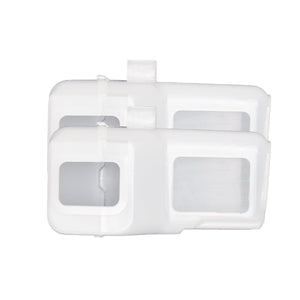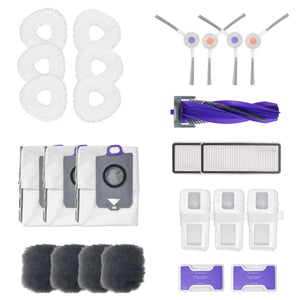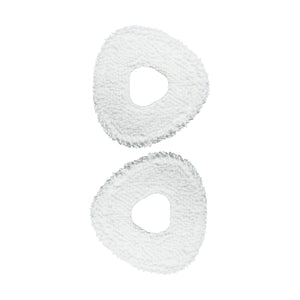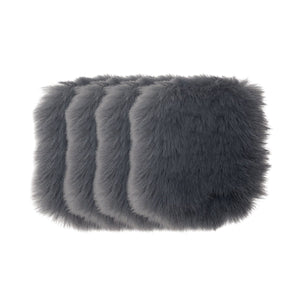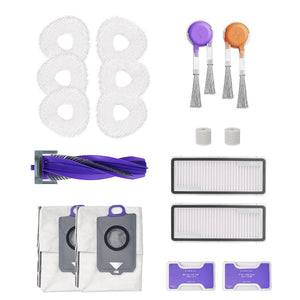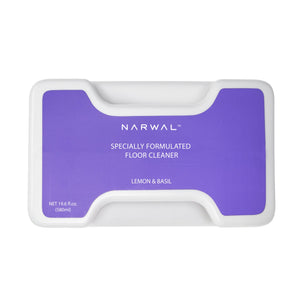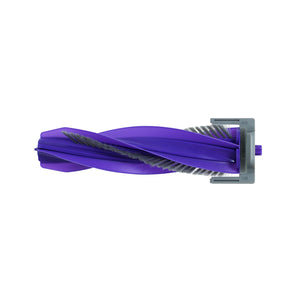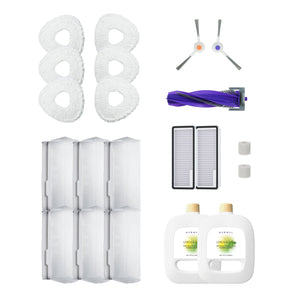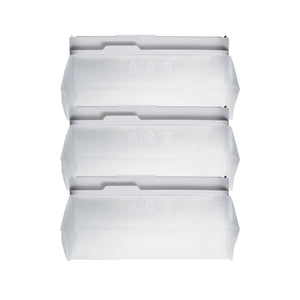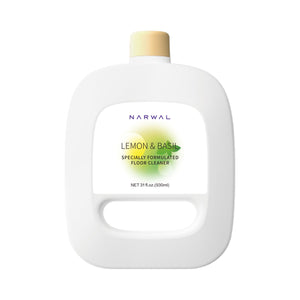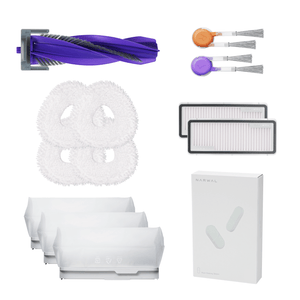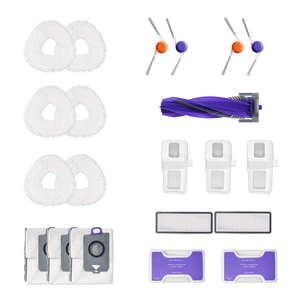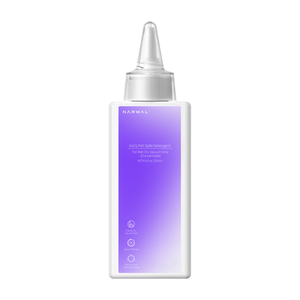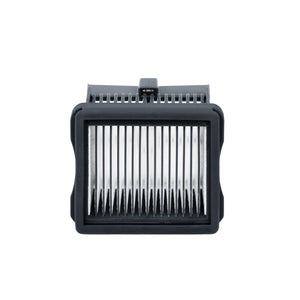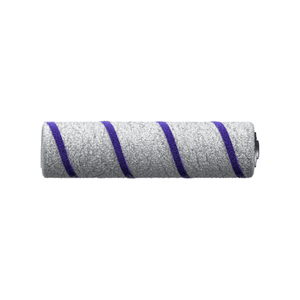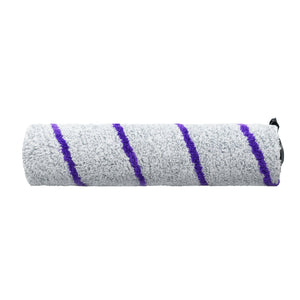Your robot vacuum used to clean everything perfectly — but now it barely picks up crumbs. Sound familiar? You’re not alone. “Robot vacuum losing suction” is one of the most common problems among Dyson, Roomba, Roborock, and Shark owners. Weak suction, clogged filters, or tangled brushes can make any cleaning session frustrating.
In this guide, you’ll discover exactly why your robot vacuum stops picking up dirt — the real causes behind suction loss and the easy fixes you can do in minutes. Plus, you’ll see how Narwal Flow’s self-cleaning filters and tangle-free brushes keep suction strong without the hassle.
What are the Common Reasons for Loss of Suction in Robot Vacuums?
A common cause of suction loss in robot vacuums is the lack of regular maintenance. This can lead to clogged filters, blocked brushes, and reduced airflow. When dust and debris accumulate in these areas, the vacuum's efficiency decreases. Additionally, worn-out brushes and an improperly maintained battery can further decrease suction power. Consistently cleaning and replacing parts on the schedule are vital for sustaining peak performance.
|
Cause |
Symptoms |
Quick Fix |
|
Clogged filter |
Weak suction, louder noise |
Clean or replace filter |
|
Hair in brushes/rollers |
Brushes stop spinning, dirt left behind |
Remove tangled hair |
|
Loose connections or leaks |
Sudden drop in suction, overheating |
Check seals and assembly |
|
Foreign objects |
Strange noise, no airflow |
Remove blockage |
|
Battery issues |
Short runtime, weak suction |
Recharge or replace battery |
|
Full dustbin |
Vacuum stops often, no pickup |
Empty bin regularly |
If you’ve already cleaned your vacuum but it’s still not performing well, try the quick diagnostic guide below.
Quick Diagnostic: Why Your Robot Vacuum Isn’t Suctioning Properly
If your robot vacuum still has weak suction or isn’t picking up dirt even after cleaning,
use this quick checklist to diagnose the problem step by step.
1. Filter clogged or dusty?
Dust buildup blocks airflow and weakens suction power. Remove the filter, tap out dust, rinse if washable, and replace it every two to three months.
2. Brushes tangled or jammed?
Hair wrapped around the brush reduces pickup and can make the vacuum sound louder. Detach the brushes, remove hair with scissors, and clean the roller ends.
3. Battery weak or not charging fully?
Low voltage prevents the suction motor from operating at full power. Fully recharge after each use. Replace the battery if runtime continues to shorten.
4. Dustbin full or air tunnel blocked?
A full bin or trapped debris limits suction flow. Empty the dustbin and clear all air channels with a small brush or compressed air.
5. Still weak? Check for air leaks or loose seals
Even clean vacuums can lose suction if air escapes from cracks or worn seals. Inspect the main housing, filter gasket, and dustbin seals; refit or replace if necessary.
Narwal Flow Advantage: Narwal Flow prevents these issues automatically through self-cleaning filters, tangle-free DualFlow brushes, and a sealed airflow design, maintaining powerful suction without frequent maintenance.
If you’ve cleaned every component but still suspect reduced suction, you can measure robot vacuum suction using a simple airflow or vacuum gauge.
Place the gauge at the dustbin intake or nozzle and compare readings to the manufacturer’s rated Pa value — lower pressure usually confirms a blocked filter or weakened motor.
Clogged Robot Vacuum Filter: Why Suction Drops
Filters in a robot vacuum trap dust, dirt, and allergens, keeping the expelled air clean. This ensures a healthier home environment. Filters can become clogged with fine dust, pet hair, and larger debris. Homes with pets are especially prone to filter clogs. Regularly check and clean the filters to prevent this. A clogged filter can significantly impact your robot vacuum’s performance. The most noticeable sign is a drop in suction power. You might also hear unusual noises as the vacuum struggles to pull air through a clogged filter. Regularly checking and cleaning the filters can help prevent clogging and maintain your vacuum's performance.
Blocked or Tangled Brushes and Rollers Reduce Pickup
Brushes and rollers are designed to agitate and lift dirt and debris from various surfaces, including carpets and hard floors. Hair, threads, and larger debris can easily get tangled around the brushes and rollers. This can cause them to block or become less effective. When brushes and rollers are obstructed, they can’t spin freely, reducing their ability to collect dirt and impairing the vacuum’s suction. Symptoms of blocked or damaged brushes and rollers include reduced cleaning efficiency, unusual noises, and visible obstructions.
Loose Connections or Air Leaks Cause Suction Loss

Loose connections or leaks disrupt the vacuum's airflow. When air escapes through gaps or misaligned components, the vacuum cannot maintain the necessary pressure to create strong suction. Loose connections or leaks can occur due to regular use, improper assembly, and wear and tear. When there are loose connections or leaks, several performance issues can arise, including reduced suction power and overheating.
Foreign Objects Blocking Airflow in Robot Vacuums
Foreign objects in a robot vacuum are a common reason for loss of suction because they can block airflow and hinder the vacuum’s ability to clean effectively. When foreign objects like small toys, socks, or larger debris get sucked into the vacuum, they can obstruct the airflow pathways. This blockage prevents air from moving efficiently through the vacuum’s system, reducing its suction power. Several signs can indicate that your vacuum has a foreign object causing a blockage, including strange sounds and reduced suction.
Robot Vacuum Battery Issues and Weak Suction
Battery issues are another common reason for the loss of suction in robot vacuums. The performance of a robot vacuum’s battery is directly linked to its suction power. A fully charged, healthy battery provides the necessary power for the vacuum’s motor to operate at its full capacity. When the battery is weak or failing, the vacuum cannot generate the same level of suction. Signs of a failing battery include a decrease in runtime and the inability to fully charge.
Full Dustbin
A full dustbin is a common reason for the loss of suction in robot vacuums. Regularly emptying the dustbin is crucial because as it fills up, there is less space for collecting dirt and debris, which can impede the vacuum’s ability to pick up new particles. Reduced suction power and frequent stops are indicators that the dustbin needs to be emptied.
Why Your Vacuum Stops Picking Up Dirt?
The most common reason is a clogged filter, a full dustbin, or tangled brushes. These block airflow and reduce pickup ability. Empty the bin, clean or replace the filter, and remove hair from the brushes. If suction is still weak, check the battery. A weak battery can reduce motor power.
What Gives a Robot Vacuum Its Suction Power?
Suction power in robot vacuums is measured in Pascals (Pa) — a standard unit of pressure used to describe how strongly a vacuum can lift debris. Most robot vacuums generate between 2,000 and 5,000 Pa, while advanced models like Narwal Flow deliver even higher consistent pressure thanks to a sealed airflow design. If you’ve ever wondered how many Pa of suction a robot vacuum needs, the answer depends on floor type: around 2,500 Pa for hard floors and 4,000 Pa or more for carpets ensures efficient cleaning.
How to Solve Robot Vacuum Suction Loss Problems
Regular maintenance is essential for ensuring your robot vacuum performs optimally and has a long lifespan. Here are step-by-step instructions to maintain peak performance for your vacuum cleaner, including cleaning and replacing filters, emptying the dustbin after every use, removing obstructions from brushes and rollers, checking for airflow blockages, battery care, and replacement, updating software, replacing components and seeking professional servicing.
Regular Maintenance to Prevent Suction Loss
Regular maintenance is essential for ensuring your robot vacuum performs optimally and has a long lifespan. Here are some detailed steps to keep your vacuum in top shape:
- Cleaning and Replacing Filters: Remove, tap, rinse, and dry filters regularly. Replace them every three to six months.
- Emptying the Dustbin After Every Use: Open the dustbin compartment, remove, empty, and clean it after each use.
- Removing Obstructions from Brushes and Rollers: Inspect, cut, and remove tangled materials. Wash and dry brushes and rollers periodically.
- Checking for Airflow Blockages: Disconnect the hose, check for blockages, and clear any obstructions using appropriate tools.
- Battery Care and Replacement: Avoid complete discharge, charge after use, and follow manufacturer guidelines for battery replacement.
- Updating Software: Regularly check for and install software updates to improve functionality and performance.
Replacing Components
- Identifying When Brushes and Rollers Need to Be Replaced: Check for visible wear and tear, reduced cleaning efficiency, and frequent clogs.
- Steps for Replacing Worn-Out Parts: Turn off the vacuum, remove the brushes and rollers, clean the area, install new parts, and test the vacuum.
- Recommended Replacement Schedules: Replace brushes and rollers every 6 to 12 months depending on usage and presence of pets.
- Removing Obstructions from Brushes and Rollers: Regularly inspect and clean brushes and rollers to prevent frequent replacements.
Seeking Professional Servicing
Seek professional help if suction loss persists despite regular maintenance. Issues like unusual noises smells, and battery problems also require professional attention. If your vacuum is under warranty, professional servicing ensures repairs are covered and done correctly.
When it comes to reliable service and top-quality robot vacuums, Narwal is a trusted option. Narwal's authorized service centers provide excellent support, ensuring your vacuum remains in optimal condition. With positive customer reviews and a commitment to quality, Narwal stands out as a reliable choice for your vacuum needs.

User Experiences with Robot Vacuum Suction Loss
Many readers want to know how real users deal with suction problems. Experiences show that most issues come from the same few causes.
Pet owners often report that their vacuums lose suction fast. The reason is usually filters clogged with pet hair and fine dust. Cleaning the filter every few days helps. Some readers note that while they have to do this often, Narwal Flow keeps the filter clean with a 176°F self-cleaning system and replaceable filter, so blockages are far less common.
Others share that suction drops when the battery gets weak. Replacing the battery usually solves it. In contrast, Narwal Flow’s 6400mAh battery delivers up to 90 minutes of cleaning on one charge, giving longer consistent suction.
Hair tangling on the brush is another frequent complaint. Users describe how they spend time cutting away hair each week. Narwal Flow avoids this with its DualFlow tangle-free system, which directs hair into the dustbin instead of wrapping around the brush.
These stories prove that suction loss is a common issue, but also that solutions exist. Regular maintenance works, and advanced designs like Narwal Flow make it easier to prevent problems before they start.
[cta:flow-robot-vacuum-and-mop]
Brand-Specific Suction Issues (and How Narwal Flow Differs)
When users search for robot vacuum losing suction or not picking up dirt, they often mention specific brands such as Roomba, Roborock, Dyson, and Shark. These real-world cases highlight how suction loss is a common issue across the industry — and how design choices can make or break cleaning performance.
Roomba: Not Picking Up Dirt? Try These Quick Fixes
Many Roomba owners report issues like “Roomba not picking up dirt” or “Roomba not suctioning”.
Main causes: Clogged filters and tangled brushes, especially in homes with pets.
Quick fix: Remove hair from the roller brushes, clean or replace the filter, and empty the dustbin frequently.
Narwal advantage: Unlike Roomba’s manual upkeep, Narwal Flow’s 176°F self-cleaning filter and DualFlow tangle-free system prevent these issues automatically — keeping suction strong without constant cleaning.
Roborock: Weak Suction on Carpets and Poor Dirt Pickup
Some Roborock users search for “Roborock not suctioning” or “not cleaning properly”, especially when used on carpets.
Main causes: A loose brush cover often prevents a proper seal, reducing airflow pressure.
Quick fix: Check and reseat the brush cover, clean the dustbin and filter, and test on different surfaces.
Narwal advantage: CarpetFocus technology automatically lowers the brush cover to create a sealed high-pressure airflow zone, improving dirt pickup by up to 182% compared to typical models.
Dyson: Robot Vacuum Losing Suction Over Time
Searches like “Dyson robot vacuum losing suction” are common because Dyson’s airflow channels can collect fine dust over time.
Main causes: Blocked airflow paths, clogged HEPA filters, or aging batteries.
Quick fix: Clean the filters monthly, check airflow channels, and replace the battery when runtime drops.
Narwal advantage: Narwal Flow’s sealed airflow system and 6400mAh high-efficiency battery maintain consistent suction for longer, reducing long-term performance decline.
Shark: Suction Motor Stopped Working — Reset or Repair?
Queries like “Shark robot suction motor stopped working” often point to motor or electrical issues.
Main causes: Overheated or failed suction motors caused by clogged ducts or electrical wear.
Quick fix: Try a soft reset, clean internal filters, and if the motor still won’t start, contact service support.
Narwal advantage: Narwal Flow features smart motor protection that automatically shuts off before overheating, preventing permanent suction motor damage — a major improvement over most Shark models.
While each brand’s symptoms differ, the root causes are nearly identical: clogged filters, tangled brushes, airflow leaks, and battery wear. Narwal Flow was built to eliminate these weak points through self-cleaning, tangle-free brushes, sealed airflow paths, and high-capacity batteries — ensuring powerful, consistent suction with far less maintenance. If you’re tired of weak suction and constant cleaning, Narwal Flow offers a smarter, self-maintaining solution.
Most robot vacuum issues—from weak suction and battery failure to tangled brushes—stem from the same maintenance problems. Understanding these issues helps you choose smarter technology that prevents them altogether.
Stop Worrying About Suction Loss — Choose Narwal
Weak suction, clogged filters, and endless maintenance don’t have to be part of your cleaning routine. This guide showed you the causes and fixes, but if you want a robot vacuum that solves these problems for you, the answer is simple: Narwal.
Discover how Narwal keeps suction powerful, reduces maintenance, and makes every clean effortless.
FAQs: Fixing Weak Suction in Robot Vacuums
Can a robot vacuum permanently lose suction power?
Yes. Long-term wear of the motor or seals can cause a permanent drop in suction. Regular filter and brush maintenance helps slow this decline, but once the motor weakens, replacement is the only fix.
How can I tell if my robot vacuum’s suction is weaker than normal?
If you notice debris left behind or less noise from the vacuum motor, it’s often a sign of reduced suction. You can test suction by picking up small items like rice or sand — poor pickup usually means restricted airflow or motor fatigue.
Do robot vacuums automatically adjust suction on carpets and hard floors?
Some advanced models, such as Narwal Flow, do. These vacuums use sensors to detect surface type and automatically increase suction when cleaning carpets or rugs, preserving battery on hard floors.
How often should I clean the robot vacuum filter to keep suction strong?
For most households, cleaning the filter every week and replacing it every 2–3 months prevents clogging and suction loss. Homes with pets may need more frequent maintenance.
Is it worth repairing a robot vacuum that has lost suction?
It depends on the model. If the issue is a clogged filter or brush blockage, cleaning is cost-free. But if the suction motor or battery has failed, repair costs may approach half the price of a new vacuum — upgrading to a model with self-maintenance features can be more economical.
How does Narwal Flow maintain suction better than other brands?
Narwal Flow uses a sealed airflow design, self-cleaning filters, and a tangle-free brush system. These features prevent clogging and reduce suction loss over time, helping it sustain strong performance with minimal maintenance.






















